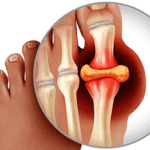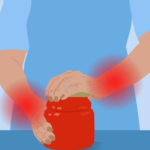Your commute could be the reason for your neck, back and shoulder pain
Driving can be stressful. Traffic, road rage and the car that just cut you off without a blinker can all contribute to how you feel behind the wheel. But it’s not just the external elements that can make your daily commute or road trip less enjoyable – your driving posture and the way you sit in the car can contribute to neck, back and shoulder pain.
Ugh! As if you needed another reason to be more stressed while driving.
The first thing I tell people when it comes to neck, back pain and shoulder is that everyBODY is different,“What feels comfortable for one person might cause another pain. It’s crucial to find a comfortable and supportive position for you.
Morrison offers these tips and advice about driving posture, so you can stop asking “are we there yet” and start enjoying the ride:
- Let the seat do the work. Are you sitting too far back and struggling to see clearly? Are you straining forward? Your seated position should be promoting an upright spine. Try adjusting your seat closer or further away from the steering wheel. The least amount of lower back disk pressure occurs when the seat is reclined about 30 degrees. Also check that you aren’t sitting too high or too low compared with the steering wheel. When your seat is adjusted properly, you should be able to sit back and allow the seat to support you in your best alignment.
- Relax your arms. Your arms should not be reaching out of socket when you drive. They should be relaxed with a gentle bend in the elbow. Or consider using the arm rests on either side of you to help take the load off your shoulders and spine.
- Head back. For most people, the back of your head should be touching the head rest with your chin level and shoulders back. Think about elongating the spine as you drive.
- Try a lumbar support pillow. If there’s a gap between the seat and your lower back, you might consider using a lumbar support pillow when you drive. This can help ease lower back pain and support the natural curve of your spine.
- Utilize cruise control. This can be a good option for long-distance driving and can help keep your feet flat on the floor. But be sure to avoid sitting in bucket-style seats for too long, as having your knees higher than your hips can cause hamstring and glute discomfort.
- Consider hand position at 4 and 8. This hand position may be more restful for shoulder and neck support rather than the 10 and 2 position you were taught in driving school.
- Position your mirrors correctly. You shouldn’t be adjusting your mirrors very frequently. If you notice yourself playing with the mirrors on your commutes home, it could be a sign that you’re starting to slump throughout the day.
- Take breaks during long drives. You should not be driving more than two hours without taking a short break to stretch and get your blood circulating. It’s no secret that sitting for a prolonged amount of time is bad for your health!
It may take some adjustments
Figuring out what positions are causing you issues or where exactly your discomfort is coming from will likely take a few modifications, says Morrison. Try to make a few changes at a time to help pinpoint what is triggering your pain. First try adjusting your seat for a few days, then try different positions with your arms if that doesn’t work and so on.
Changing too much too quickly could make your symptoms worse and leave you feeling clueless, so it’s a good idea to proceed with caution. You might not have the strength to sit in a new position for your entire 30 minute commute, so trying a new position for five minutes at a time is a good place to start.
Set up your car to work for you and practice good driving ergonomics as if you were sitting at your desk at work. Driving shouldn’t be more stressful than it already is and it certainly shouldn’t cause pain. If you can’t seem to figure it out with a few adjustments on your own, it’s time to see a physical therapist.





